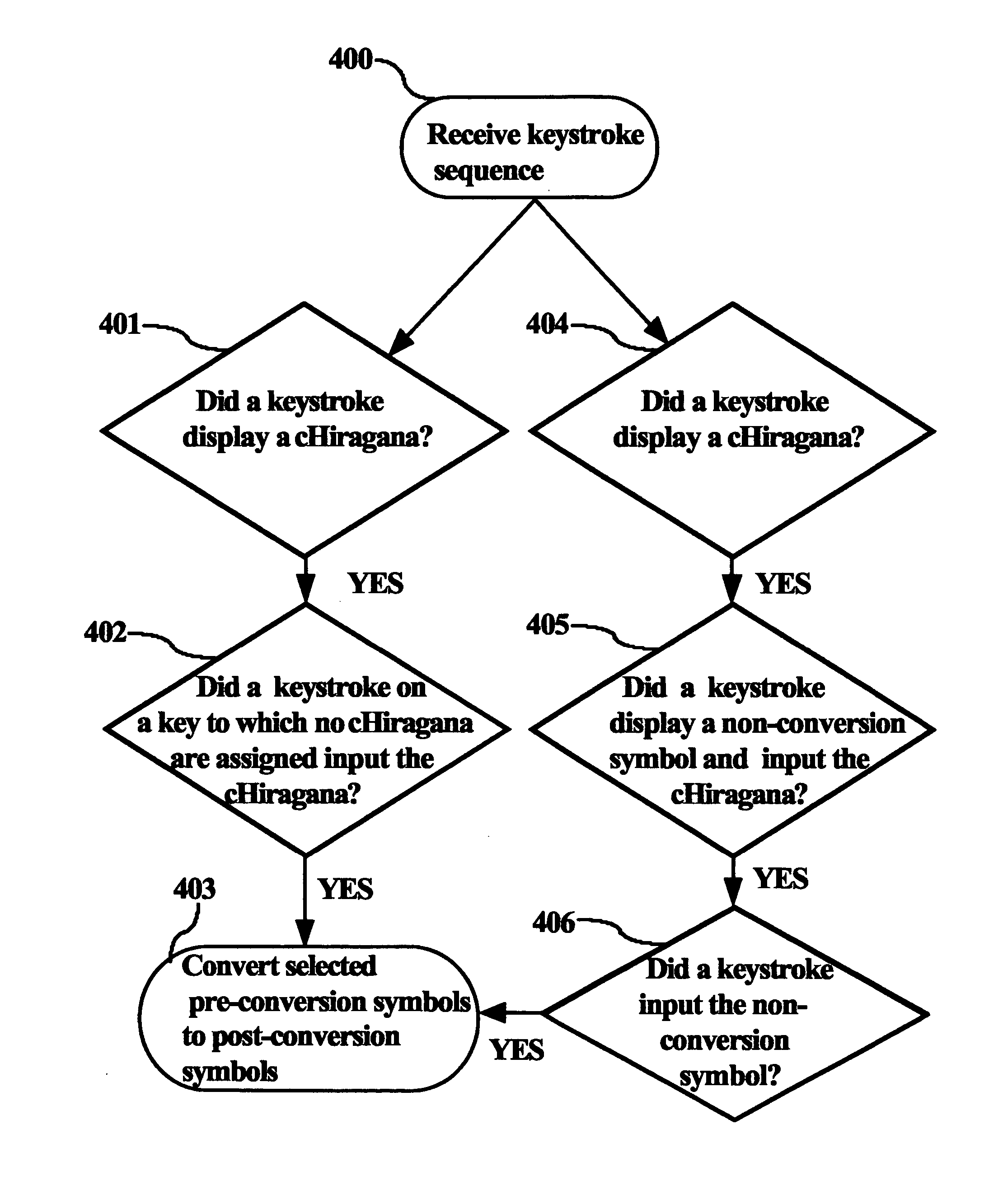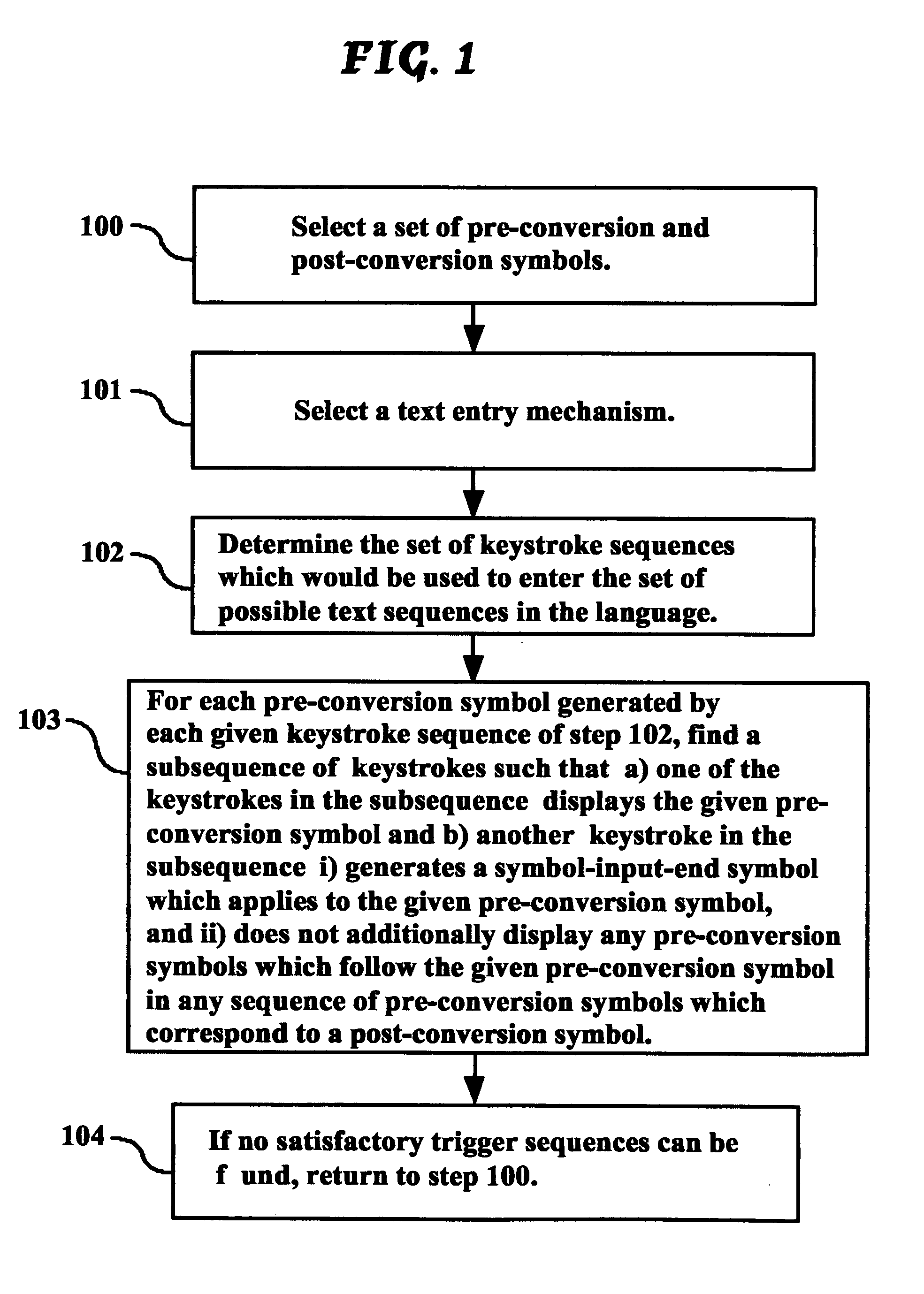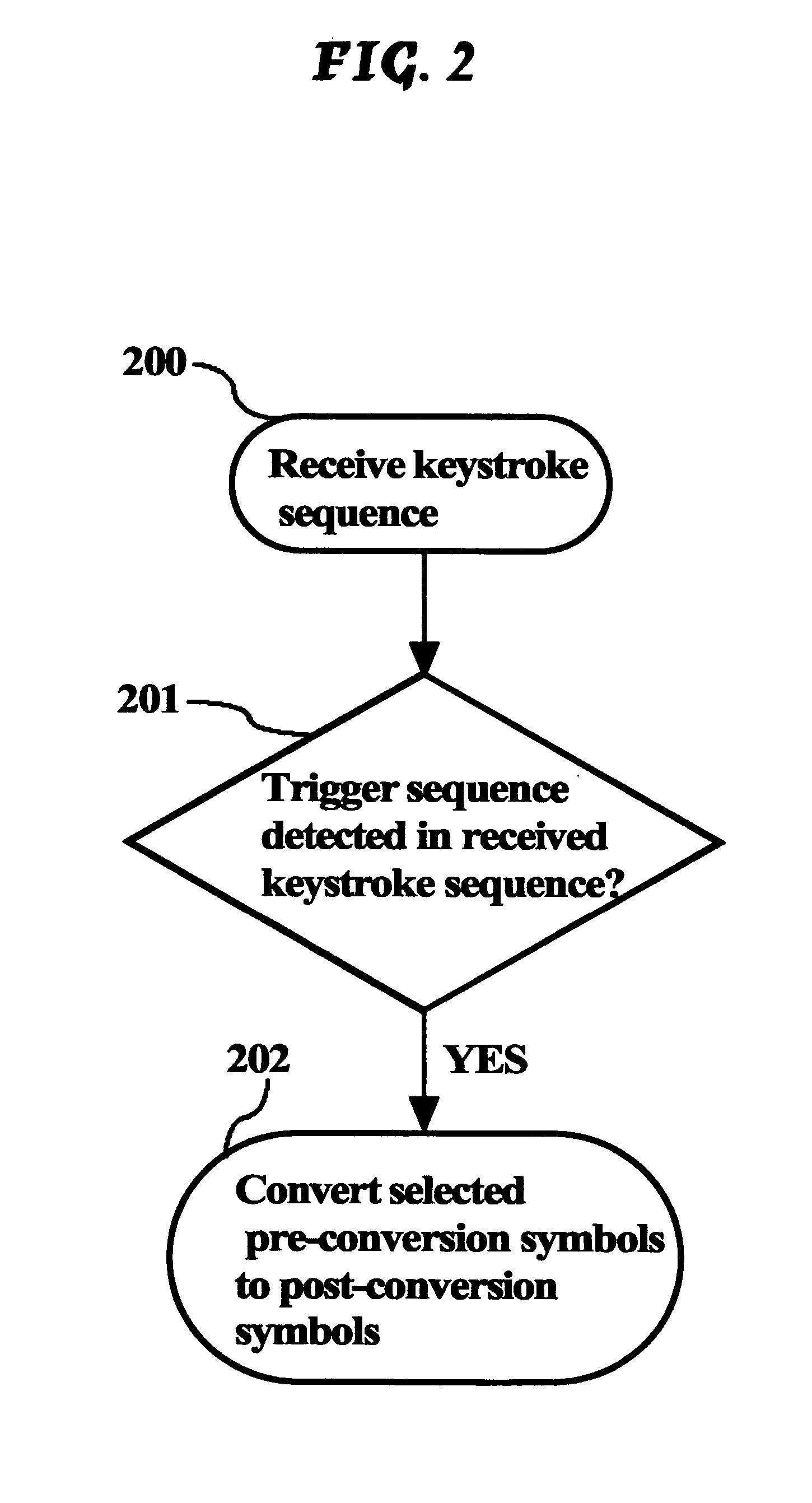Efficient Method and Apparatus For Text Entry Based On Trigger Sequences
a text entry and efficient technology, applied in the field of efficient methods and apparatus for text entry based on trigger sequences, can solve the problems of a reduction in the number of keys compared to the number of characters to be input, exacerbate the problem of a reduced number of keys, and the difficulty of identifying the text entry sequence, so as to achieve the effect of reducing the memory and processing requirements of the client, reducing the minimum computer memory requirements, and highly effective client-server architectures
- Summary
- Abstract
- Description
- Claims
- Application Information
AI Technical Summary
Benefits of technology
Problems solved by technology
Method used
Image
Examples
Embodiment Construction
[0070] The Method of Trigger Sequences. A trigger sequence is a subsequence of keystrokes which minimally has the attribute of triggering conversion substantially if and only if a conversion is intended by the user. It is in addition desirable that: 1) It is intuitive for a native speaker of the language that conversion would take place when the trigger sequence is input.
[0071] 2) Triggering may be performed even when a predictive mechanism is used to predict the symbol the user intends to enter, for either or both of the pre-conversion or post-conversion symbols.
[0072] 3) In the case of error-free input of pre-conversion symbols, when a trigger sequence is entered, there are always at least enough not-yet-converted pre-conversion symbols entered to define at least one post-conversion symbol. The conversion which is triggered by entry of the trigger sequence will convert the at least enough not-yet-converted pre-conversion symbols to at least one post-conversion symbol, and may co...
PUM
 Login to View More
Login to View More Abstract
Description
Claims
Application Information
 Login to View More
Login to View More - R&D
- Intellectual Property
- Life Sciences
- Materials
- Tech Scout
- Unparalleled Data Quality
- Higher Quality Content
- 60% Fewer Hallucinations
Browse by: Latest US Patents, China's latest patents, Technical Efficacy Thesaurus, Application Domain, Technology Topic, Popular Technical Reports.
© 2025 PatSnap. All rights reserved.Legal|Privacy policy|Modern Slavery Act Transparency Statement|Sitemap|About US| Contact US: help@patsnap.com



